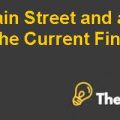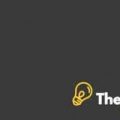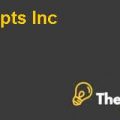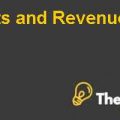Problem Diagnosis
The management of Marriott Corporation in 1980 was facing an interesting dilemma. The problem faced by the company was that it not only had excess debt capacity but the projection and the forecast of the future cash flows and operations of the company indicated that this capacity would increase over the future years. It had been stated by the management of the company that the unused debt capacity was inconsistent with the objective of maximizing the shareholder wealth.
Excess debt capacity was viewed as comparable to the unused plant capacity because the existing equity base could then support the productive assets of the company. The view and concern of the management for the excess debt capacity has further been strengthened because of the rising inflation rates in 1970s. The management thought that it would further increase the cost of debt and the cost of equity of the company and destroy the wealth of the shareholders.
Management was therefore, now faced with two main problems. First, the management of the company had to determine the excess debt capacity of the company and secondly, it needed to decide that whether the excess funds needed to be invested in existing, the new businesses, or the company should return the funds to the shareholders of the company by repurchasing stock or paying them higher cash dividends. The analysis of each of the four investment alternatives needs to be made and then a final recommendation has to be made to the management of the company.
Analysis
Marriott Corporation had a good record of accomplishment of investing its cash flows at higher net returns therefore; the company was considering utilizing its excess debt capacity to increase the value of the shareholders. If the company utilizes its excess debt capacity then it would gain the tax shield advantages and this would result in the reduction of the capital cost of the company.
This would also increase the share price of the company and generate higher wealth for the shareholders. In addition, as the inflation rates are high therefore, a high debt makes more sense and the maintenance of a good coverage ratio is critical to the performance of Marriot Corporation. The bond rating of the company is also important and if the debt capacity were not efficiently utilized then the company would lose its ‘A’ credit rating.
We have forecasted the projection data for the next five years from 1980 to 1984 for Marriot Corporation. A number of assumptions have been used to compute the free cash flows of Marriott Corporation. The revenue growth rate of 1978-1979 has been used for the five-year period and the CAPEX expenditure and the WC investment has been computed based on historical ratios as a percentage of revenue. Average ratio has been computed to generate the forecast figures. These assumptions are shown in exhibit 1 in the appendices...........................
This is just a sample partial work. Please place the order on the website to get your own originally done case solution.












